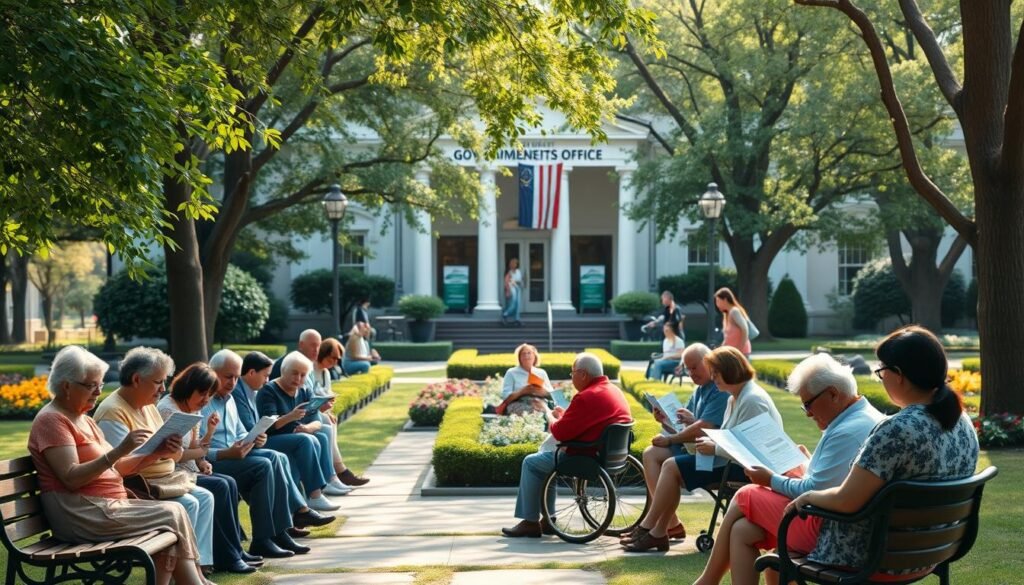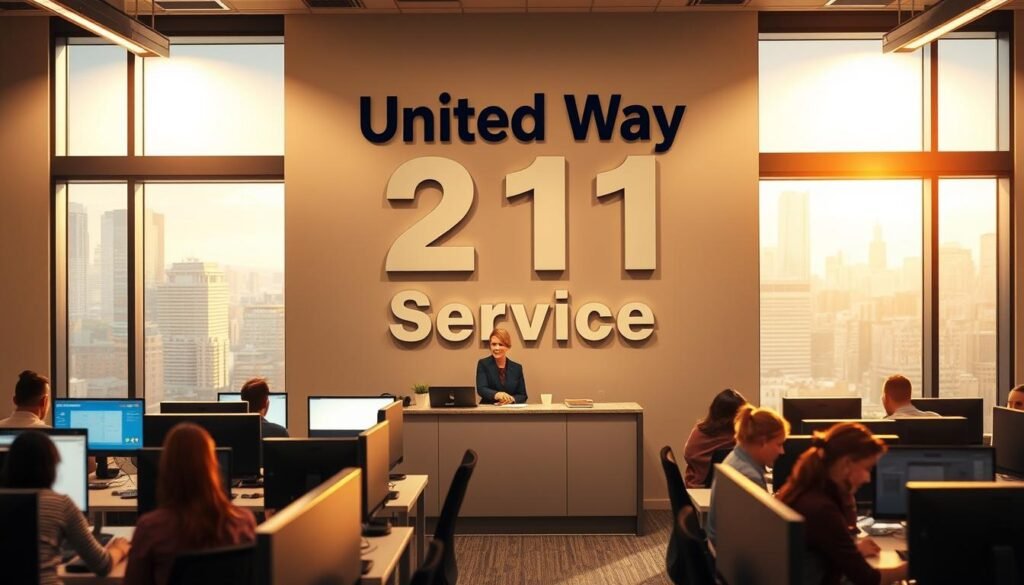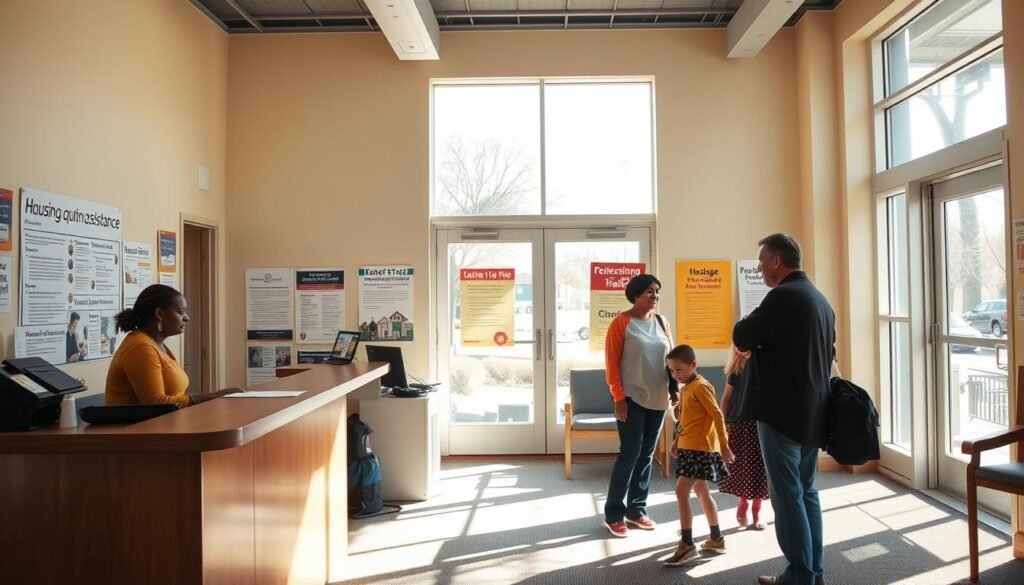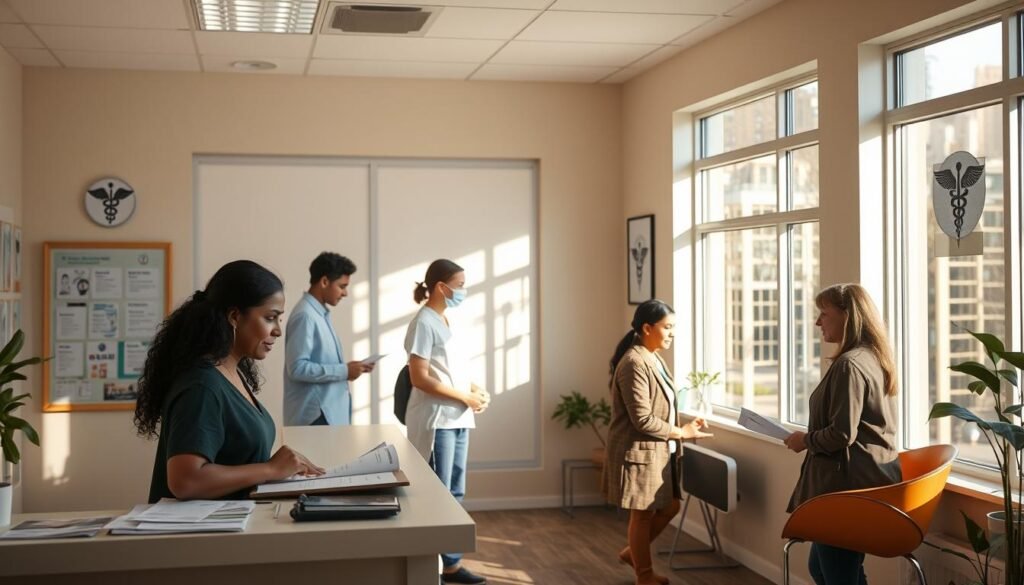Did you know millions of Americans qualify for help but never apply? Many struggle with bills, food, or healthcare costs without realizing support exists. The right resources can make a big difference in achieving financial security.
Programs like SNAP, Medicaid, and LIHEAP offer vital aid. The United Way 211 system connects over 7 million people yearly to local services. One user shared, “I knew if I could just get a little help, things would turn around.” Whether by call, text, or online search, help is within reach.
Key Takeaways
- Federal and state programs address food, housing, and medical needs.
- United Way 211 helps millions access local community support.
- Key programs include SNAP, Medicaid, and energy bill assistance.
- Multiple contact methods make aid easy to reach.
- Many qualify but don’t apply—exploring options is crucial.
Introduction to Government Financial Assistance
Three out of four U.S. households miss out on benefits they qualify for. Federal programs distribute $876 billion annually across 83 initiatives, yet myths about eligibility leave many struggling. A Spartanburg Regional Healthcare System patient shared, “The relief I felt after getting help was indescribable.”
In South Carolina, Spartanburg Regional’s model program covers medical bills for low-income patients. Similar support exists nationwide. Whether it’s food, housing, or healthcare, aid adapts to crises and long-term needs.
The system works in three layers:
– Immediate help via 211 for emergencies.
– Long-term solutions through Benefits.gov.
– Specialized programs like WIC for families.
Policies ensure access regardless of background. Everyone deserves to meet their basic needs—exploring options is the first step.
How to Access General Financial Assistance via 211
Finding support during tough times is easier than most people think. The United Way’s 211 network connects you to local resources with a single call, text, or online chat. Available in all 50 states, this free service operates 24/7 to match you with help for bills, food, and more.
Contacting 211 for Immediate Help
Dial 211 from any phone to start. After selecting your language, you’ll enter your zip code to find local options. A trained specialist then guides you through a needs assessment. For example, a Phoenix resident secured $2,300 in utility debt relief through 211-referred agencies.
Keep key documents ready, like ID, pay stubs, and lease agreements. Beware of scams—legitimate programs never charge application fees.
Using the Benefits.gov Finder Tool
For long-term solutions, Benefits.gov screens 1,000+ aid programs. The average user qualifies for 4.3 programs worth $6,712 yearly. Enter your address and needs to see matches instantly.
Whether you need urgent help or ongoing support, these tools simplify the process. The United Way and Benefits.gov ensure no one navigates challenges alone.
Housing and Utilities Assistance Programs
Keeping a roof overhead shouldn’t mean choosing between rent and groceries. Millions of households qualify for programs that ease housing and utility burdens. From emergency rent aid to weatherization upgrades, help exists at every level.
Rental and Mortgage Payment Support
Facing eviction or foreclosure? Call HUD’s hotline at 877-542-9723. Some states still offer COVID-19 protections, like paused evictions. A low income family of four earning under $40,280 may qualify for aid.
HUD-insured properties have special forbearance options. The United Way 211 service can connect you to local rental programs fast.
Low Income Home Energy Assistance Program (LIHEAP)
LIHEAP helped 5.3 million households cover energy costs in 2022. This energy assistance program offers grants for bills and furnace repairs. Apply through your state’s LIHEAP office or United Way 211.
Negotiating with Utility Providers
Overdue on electricity or gas? Try this script: “I can pay 40% today if you waive late fees.” Many providers offer payment plans. Weatherization programs cut bills by $372/year on average.
Programs like LIHEAP and 211 turn crises into solvable challenges. No one should lose sleep over keeping the lights on.
Healthcare and Medical Financial Assistance
Medical bills shouldn’t force families into impossible choices. Nearly 1 in 4 Americans delay care due to costs, yet programs exist to bridge the gap. From insurance plans to prescription discounts, support spans every need.
Medicaid, Medicare, and CHIP Enrollment
40 states now cover adults earning up to 138% of the federal poverty level. Children in low-income households qualify for CHIP, even if parents don’t. Use the United Way 211 service to find local enrollment help.
HealthCare.gov offers plans 23% cheaper than COBRA. Federally Qualified Health Centers (FQHCs) provide checkups for $20–$150, scaled to income.
Prescription Savings Programs
SingleCare slashes generic drug costs by 80%. One patient cut a $489 inhaler to $15 using RxAssist’s coupons. Always ask pharmacists about discount cards—most don’t advertise them.
Low-Cost Mental Health Services
Therapy shouldn’t be a luxury. Open Path Collective connects clients to $30–$60 sessions at 23,000+ locations. SAMHSA’s toolkit helps find clinics for opioid dependency, too.
If debt from treatment feels overwhelming, United Way can direct you to local mental health services with payment plans.
Food Assistance Programs for Families
Empty shelves shouldn’t mean empty stomachs—millions access food aid every day. Programs like SNAP and WIC ensure needy families can purchase healthy meals. In 2023, SNAP alone served 41.2 million Americans, while WIC supported 53% of U.S. infants.
SNAP Benefits and Eligibility
SNAP (Supplemental Nutrition Assistance Program) helps low-income households buy groceries. Recent upgrades allow online EBT payments at retailers like Walmart and Amazon. Farmers’ markets even double SNAP dollars for fresh produce.
Eligibility depends on income and household size. A family of four earning under $3,007 monthly likely qualifies. United Way 211 can guide applicants through the process.
WIC Program for Women and Children
WIC focuses on women, infants, and children under five. It provides nutrition staples like milk, eggs, and whole grains. Breastfeeding moms get extra benefits, including longer participation.
In South Carolina, 18 states now use mobile apps for WIC voucher redemption. The program adapts during crises too—Disaster SNAP (D-SNAP) activates post-emergencies.
Both programs prove that no family should face hunger alone. The United Way connects thousands to these lifelines yearly.
Conclusion: Navigating Financial Assistance for Stability
Getting back on your feet starts with knowing where to look. The United Way 211 service resolves 89% of housing cases, proving help is effective when you reach out. Local community programs like the Grocery Workers Fund offer $2M in aid for those in need.
New tools simplify the process. Savi’s student loan analyzer saves users $156 monthly on average. AFL-CIO provides unemployment guides in English and Spanish, making resources accessible to more people.
Remember, 211 specialists are trained in 650+ aid categories. Whether it’s housing stability or food support, your path to financial security begins with one call or click. You don’t have to face challenges alone.
FAQ
What is the Low Income Home Energy Assistance Program (LIHEAP)?
LIHEAP helps households with energy costs, offering aid for heating and cooling bills. Eligibility depends on income and household size.
How can I apply for SNAP benefits?
Apply online through your state’s benefits website, in person at a local office, or by phone. Eligibility is based on income and family size.
What healthcare programs are available for low-income families?
Medicaid, Medicare, and CHIP provide coverage. Prescription savings programs like SingleCare and RxAssist also help reduce medication costs.
How does 211 connect people to resources?
Dialing 211 links you to local services for housing, food, healthcare, and more. It’s a free, confidential helpline available nationwide.
What support does WIC offer?
WIC provides nutrition assistance, breastfeeding support, and healthy food options for pregnant women, new mothers, and young children.
Can I get help with overdue utility bills?
Yes. Contact your utility provider for payment plans or apply for LIHEAP. Some states offer emergency funds for overdue bills.
Where can I find low-cost mental health services?
Community health centers, nonprofit organizations, and telehealth platforms offer affordable counseling and therapy options.
What housing assistance programs are available?
Programs like Section 8 vouchers, emergency rental aid, and local shelters provide support for rent, mortgages, and temporary housing.







